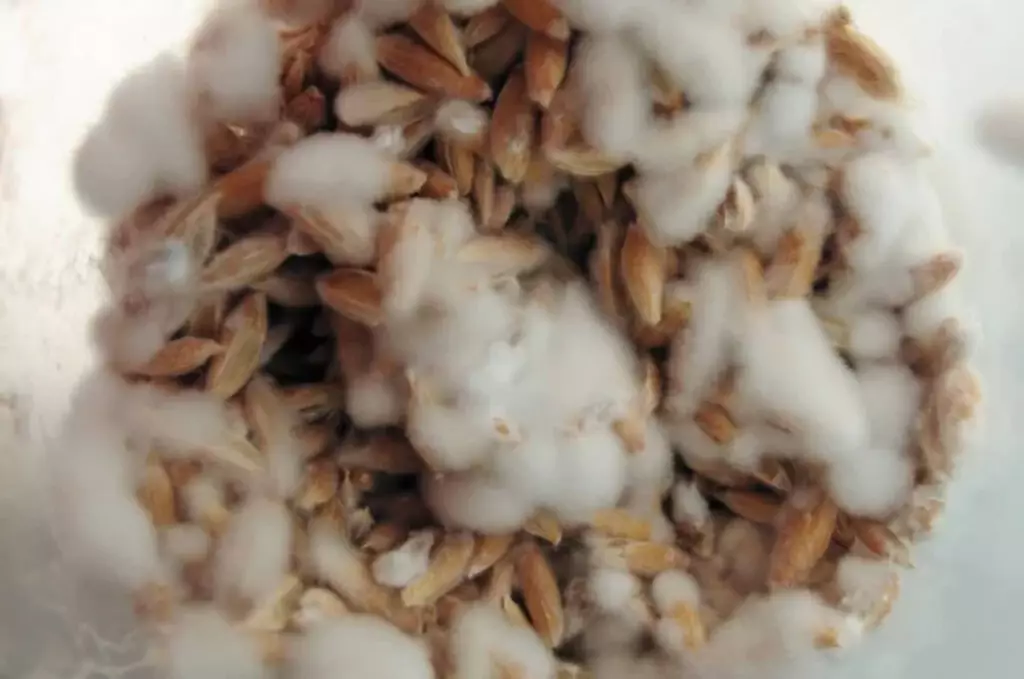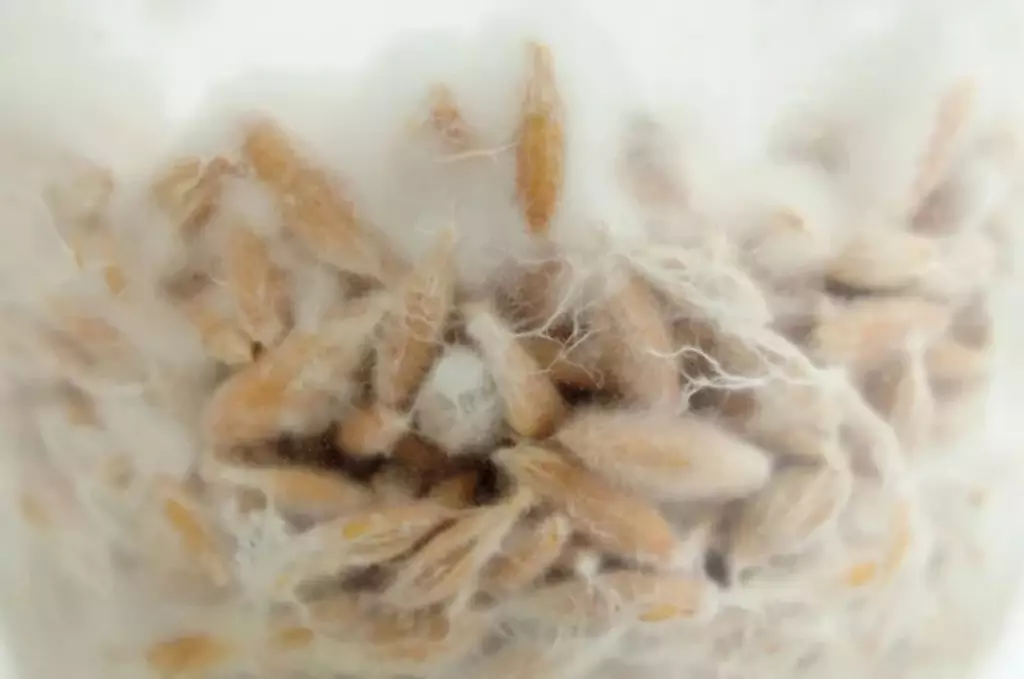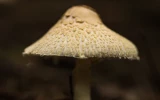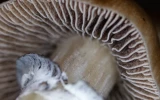How Long Does It Take Mycelium To Colonize A Bag?
Some mushrooms take a longer colonization time of up to a few months, while others can colonize a bag in just a couple of weeks. Let's find out in this article the average time it takes for mycelium to colonize a bag and explore the factors that affect the duration of this process.
Generally, it takes around 2–4 weeks for the mycelium to colonize a bag, but this depends on the substrate you are using. If you're using sawdust or straw, it can take anywhere from 14 to 21 days for the bag to fully colonize. If you're using coffee grounds or wood chips, it can take up to 30 days.
One of the most common issues that slows down colonization is contamination by bacteria or mold. Let's find out how these microorganisms affect colonization time and how you can prevent them from hampering the growth of your mushrooms.
Summary
- It takes 2–4 weeks for mycelium to colonize a spawn bag, but this can take a shorter or longer time depending on the species of mushrooms you are dealing with, and the substrate used.
- The factors that affect the rate at which the mycelium colonizes the bag include light, temperature, humidity, moisture, the quality of the spores used, and the presence of contaminants.
- The presence of contaminants can either slow down or stop the whole process of colonization, since these microorganisms compete with the mycelium for resources.

On this page:
Mycelium Takes 2 to 4 Weeks To Colonize A Bag
Mycelium colonization is the process by which the mycelium, the vegetative part of the fungus, grows and spreads throughout the substrate. Knowing how long it takes for the mycelium to colonize a bag can help you plan your growing process and ensure that your mushrooms grow as quickly and efficiently as possible.
| Mushroom Type | Estimated Mycelium Colonization Time |
|---|---|
| Button Mushroom | 14–21 days |
| Shiitake Mushroom | 14–28 days |
| Oyster Mushroom | 7–14 days |
| Portobello Mushroom | 14–21 days |
| Lion's Mane Mushroom | 14–28 days |
| Reishi Mushroom | 14–28 days |
| Enoki Mushroom | 7–14 days |
| Maitake Mushroom | 14–28 days |
Generally, it takes around 2–4 weeks for the mycelium to colonize a bag. However, some mushrooms may take longer or shorter than this. Complete colonization may take anywhere from 30 to 45 days. You will know colonization is complete when the bags are covered in white fluff with little to no visible grains and are firm to the touch.
| Substrate | Estimated Mycelium Colonization Time |
|---|---|
| Straw | 7–21 days |
| Sawdust | 14–28 days |
| Coffee Grounds | 14–21 days |
| Logs | 6–12 months |
| Wood Chips | 2–6 months |
| Compost | 14–28 days |
| Cardboard | 14–28 days |
The time it takes for the mycelium to colonize a bag depends on the substrate you're using. For example, if you're using sawdust or straw, it can take anywhere from 14 to 21 days for the bag to fully colonize. On the other hand, if you're using coffee grounds or wood chips, it can take up to 30 days or more.
If you're new to mushroom growing, it's a good idea to start with a beginner-friendly variety, such as oyster mushrooms. These types of mushrooms are relatively easy to grow and have a fast colonization time, so you can see results relatively quickly.
Oyster mushrooms grown in a straw-based substrate will only take 14–28 days to colonize a bag, while those grown in sawdust colonize a bag in just 10–20 days.
Factors Affecting Mycelium Colonization

Aside from the species of mushroom and the type of substrate used, factors such as temperature, humidity, and light can also affect the growth rate of mycelium, so it's important to monitor these conditions carefully.
-
Light: Although mycelium does not require light to grow, exposing it to light can stimulate fruiting and increase the yield of mushrooms.
-
Temperature: The optimal temperature for mycelium growth varies depending on the species, but generally falls between 70 and 80°F (21 and 27°C). For example, to induce mycelium growth in button mushrooms, subject them to temperatures of 68°F to 82°F.
Meanwhile, the required spawn run or colonization temperature for Oyster mushrooms is at least 75°F. Higher temperatures can speed up colonization, but can also increase the risk of contamination.
-
Moisture: Mycelium requires a certain level of moisture to grow, but too much moisture can lead to bacterial contamination and slow down colonization. The ideal moisture content for most substrates is around 60–70%.
-
Presence of contaminants: Contaminants such as bacteria and mold can compete with the mycelium for resources, slowing down or even stopping colonization.
-
Spores: The quality and quantity of spores used to inoculate the substrate can affect how quickly the mycelium colonizes the bag. High-quality spores with a high germination rate can colonize more quickly than low-quality spores.
Tips to Speed Up Colonization Time

Here are some tips you can do if you want your mycelium to colonize a bag more quickly:
Use high-quality spawn
The quality of your spawn affects the speed of colonization, so you may need to be sure that the spawn you get is from a reputable source and is healthy and free from contamination. You could either choose a mushroom plug spawn for outdoor cultivation or a sawdust spawn that is best for indoor cultivation. To know which one suits your needs best, you can read this article.
Use the right substrate
Different mushroom species have different ideal substrates, so make sure you are using the right one for your chosen species. Additionally, you may need to properly hydrate and sterilize your substrate of choice to avoid contamination.
You may opt for high-quality substrates such as coco coir, or make use of hardwood sawdust with wheat bran recipe, which is usually used as a substrate for shiitake mushrooms.
Inoculate the bags properly
You may want to inoculate your bags when the substrate is at the right temperature and moisture level for your chosen species. This will help the mycelium establish itself quickly and avoid competing with other microorganisms.
You might also need to ensure that the bag is properly inoculated. This means using the right amount of spores or spawn and making sure that the bag is properly sealed to prevent contamination. You can also speed up colonization by shaking the bag or breaking up the substrate to help spread the mycelium.
Keep the bags at the right temperature and humidity
Different mushroom species have different ideal temperature ranges for colonization. Make sure you are keeping your bags within the ideal temperature range for your chosen species to maximize colonization speed and avoid contamination.
The ideal colonization temperature of spawn bags is between 75°F to 80°F (24°C to 27°C). You may also help speed up colonization by ensuring that the bag is kept at the right humidity level. You could aim for around 95% humidity during the incubation period.
Avoid overhandling the bags
Mycelium is fragile and can be easily damaged by rough handling. Try to minimize the amount of handling your bags receive, and be gentle when you do need to move them.
Troubleshooting Common Colonization Issues
If you're experiencing issues with mycelium colonization, don't worry. It's a common problem, and there are ways to prevent it from happening.

One of the most common issues with mycelium colonization is slow growth. If you notice that your mycelium is taking longer than expected to colonize, there are a few factors that could be causing the issue.
- First, you may want to check the humidity levels. If the humidity is too low, it can slow down mycelium growth.
- Secondly, you can check if the substrate is moist enough. If it's too dry, it can also slow down growth. You can use a spray bottle to mist the substrate and increase the humidity levels.
Another issue you might experience is contamination. This can happen if the substrate is not properly sterilized or if it's exposed to contaminants during the colonization process.
-
To prevent contamination, always opt to use bulk substrate that's been properly sterilized using a pressure cooker.
-
If you do not have a pressure cooker, there are alternative ways to sterilize your substrate, either via boiling water or through a microwave oven. Find out in this article how you can Easily Sterilize Mushroom Substrate Without a Pressure Cooker.
-
Aside from a sterilized substrate, strive to also maintain a sterilized working environment by keeping your hands and workspace clean and free of contaminants. You must also use clean and sterile inoculation tools and equipment when working with mycelium.



